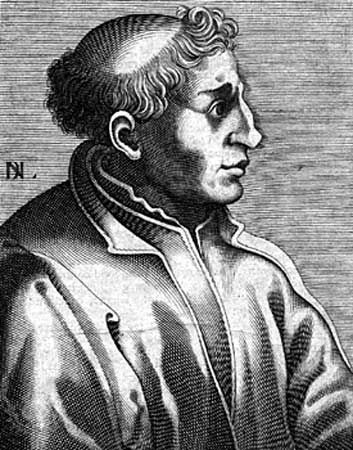(Florence 1406- Spoleto 1469)
Fra Filippo Lippi, known as Lippo Lippi, was a painter of the Italian Quattrocento.
Born in Florence, the son of a butcher named Tommaso Lippi, he was orphaned of both father and mother when he was only two years old. His aunt Lapaccia took care of him and sought to place the poor orphan in a Carmelite convent, where he was admitted at the age of eight.
After taking his vows (1421), Lippi demonstrated his inclination towards the arts while working with Masolino and Masaccio in the Brancacci Chapel of the Church of the Carmelites.
From 1430, his name appears in the convent records with the designation of painter, and his first work was a monochrome composition placed in the cloister of the convent, a painting that has not survived to this day, along with some other early works by the artist. Vasari, driven by his fondness for anecdotes, speaks of a trip to Ancona made by Lippi in 1431, during which he was captured by Tunisian pirates and held in captivity for eighteen months.
Protected by Cosimo de' Medici, Fra Filippo produced several notable works, including The Virgin and Child, which is preserved in the Uffizi Gallery in Florence; the example of the Tuscan magnate was the slowness of his work, and Lippi did not escape a miserable state.
Perhaps other more serious causes contributed to the artist's enduring poverty, as it is true that in 1450, as a result of a scam, he was imprisoned for some time, owing his conditional release to his patron Cosimo de' Medici.
Another more serious incident occurred in 1456 during the festivities of Santa Margarita, celebrated in Prato, where Lippi, taking advantage of the disorder prevailing among the large crowd gathered there, abducted the Florentine Lucrezia Tutti, who later became the mother of Filippo Lippi. This adventure, mentioned by Cosimo de' Medici in a letter addressed to Giovanni de' Medici, did not interrupt the course of the painting commissions given to Lippi, culminating in the decoration of the choir of the cathedral of Prato in 1464.
Filippo Lippi died in 1469 while he was well advanced in painting the choir of the cathedral, a work completed by his disciple and friend Fra Diamante. In 1487, Lorenzo de' Medici dedicated a monument to the artist, whose works held an excellent place among the Italian quattrocentists.
The importance of landscape and the elegance of drawing were far superior to the harsh and dull coloring, but in Botticelli's works, many qualities derived from Lippi's teachings endure.
Fra Filippo Lippi, known as Lippo Lippi, was a painter of the Italian Quattrocento.
Born in Florence, the son of a butcher named Tommaso Lippi, he was orphaned of both father and mother when he was only two years old. His aunt Lapaccia took care of him and sought to place the poor orphan in a Carmelite convent, where he was admitted at the age of eight.
After taking his vows (1421), Lippi demonstrated his inclination towards the arts while working with Masolino and Masaccio in the Brancacci Chapel of the Church of the Carmelites.
From 1430, his name appears in the convent records with the designation of painter, and his first work was a monochrome composition placed in the cloister of the convent, a painting that has not survived to this day, along with some other early works by the artist. Vasari, driven by his fondness for anecdotes, speaks of a trip to Ancona made by Lippi in 1431, during which he was captured by Tunisian pirates and held in captivity for eighteen months.
Protected by Cosimo de' Medici, Fra Filippo produced several notable works, including The Virgin and Child, which is preserved in the Uffizi Gallery in Florence; the example of the Tuscan magnate was the slowness of his work, and Lippi did not escape a miserable state.
Perhaps other more serious causes contributed to the artist's enduring poverty, as it is true that in 1450, as a result of a scam, he was imprisoned for some time, owing his conditional release to his patron Cosimo de' Medici.
Another more serious incident occurred in 1456 during the festivities of Santa Margarita, celebrated in Prato, where Lippi, taking advantage of the disorder prevailing among the large crowd gathered there, abducted the Florentine Lucrezia Tutti, who later became the mother of Filippo Lippi. This adventure, mentioned by Cosimo de' Medici in a letter addressed to Giovanni de' Medici, did not interrupt the course of the painting commissions given to Lippi, culminating in the decoration of the choir of the cathedral of Prato in 1464.
Filippo Lippi died in 1469 while he was well advanced in painting the choir of the cathedral, a work completed by his disciple and friend Fra Diamante. In 1487, Lorenzo de' Medici dedicated a monument to the artist, whose works held an excellent place among the Italian quattrocentists.
The importance of landscape and the elegance of drawing were far superior to the harsh and dull coloring, but in Botticelli's works, many qualities derived from Lippi's teachings endure.


